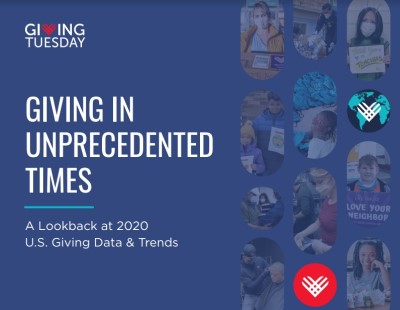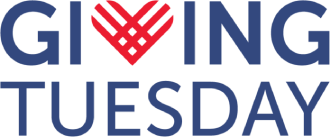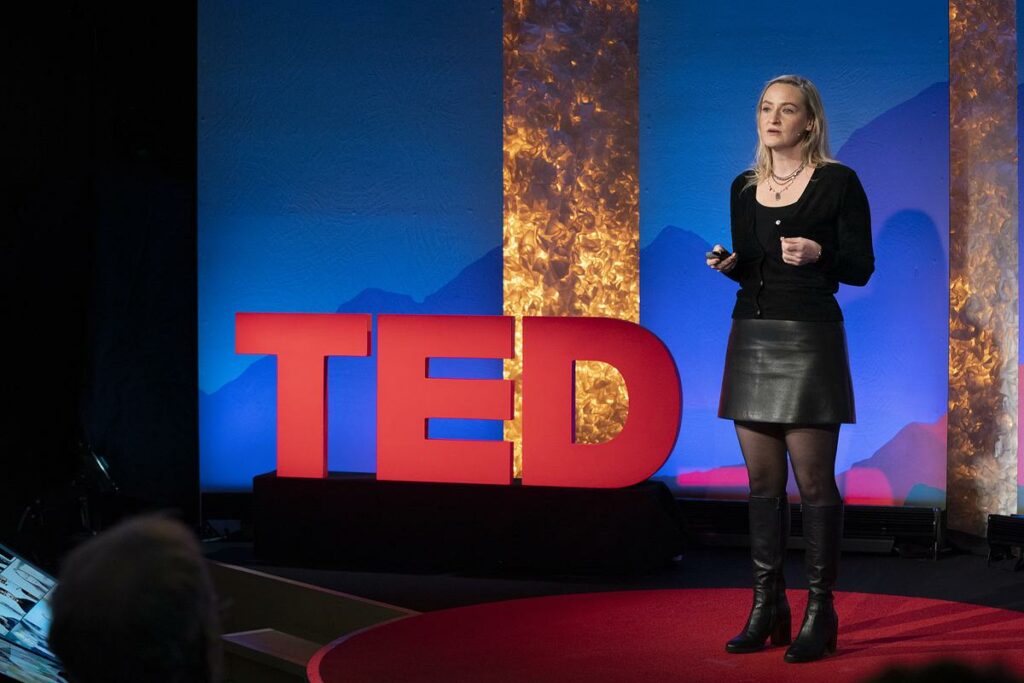New Analysis Shows Growth in U.S. Charitable Giving in 2020, Underscores Volatility as Well as Opportunity for the Social Sector to Increase Generosity
May 11, 2021w — The GivingTuesday Data Commons, the research and insights arm of the global generosity movement GivingTuesday, released a new analysis of 2020 U.S. charitable giving data that shows while giving in 2020 increased on average, not all nonprofits fared equally.

Key findings include:
- Giving in 2020 grew an estimated 5.2% year-over-year when compared to 2019.
- The sector experienced more donor mobility than ever before, with big gains in new donor acquisition largely offset by big drops in donor retention.
- The typical nonprofit experienced much lower results during 2020. For the first time on record, the typical organization’s fundraising experience in 2020 was a 5-10% reduction in revenue—despite the data showing positive returns on average.
- The multi-year trend of fewer donors overall was reversed in 2020. A 1.3% top-line gain in donors was driven almost completely by an 11% growth in small donations between $101 and $500, the highest growth for this donor size in five years.
- Key giving moments in 2020 corresponded to upticks in COVID-19, pivotal events such as action for racial justice and election activity, and #GivingTuesdayNow, a day of unity and giving held as an emergency response to COVID-19 on May 5, 2020 and GivingTuesday (December 1, 2020) giving events. These moments were largely driven by many donors giving smaller amounts.
To produce this detailed report, the GivingTuesday Data Commons designed new methodology to capture the experience of a typical nonprofit in a year of crisis, instability, and disruption to many organizations’ fundraising efforts.
“2020 was unique in that it bucked the multi-year trend of fewer donors giving. Even as total charitable giving was up, our analysis shows more clearly that while some cause areas, organizations, and donor categories saw significant gains, others suffered reductions,” said Woodrow Rosenbaum, Chief Data Officer of GivingTuesday. “Unusual volatility means that the traditional look at sector-wide results doesn’t reflect the typical nonprofit experience in 2020. This latest analysis provides a closer look at these trends and through this effort, we’ve developed new methodology for reporting more actionable, reliable, and timely giving trends.”
The latest report also highlights an increase in the percentage of nonprofits that did not fundraise each month, particularly for smaller organizations, resulting in contraction for nonprofits in those categories. Organizations faced disruptions to their work due to COVID-19 that may have affected their capacity to fundraise: inability to pivot from existing models (in-person events, for example), loss of staff or resources, lack of digital infrastructure, and pessimism about donors’ willingness and ability to give during crises to a variety of causes. This is an opportunity for sector advocates to examine ways to boost resiliency, encourage innovation, and improve infrastructure for nonprofits of all sizes and types.
“GivingTuesday is a global hub for data, learning, and ultimately, innovation around generosity,” said Asha Curran, CEO of GivingTuesday. “We take the same approach to our Data Commons, collaborating on research and disseminating insights through our distributed leadership network to foster peer learning, encouraging experimentation, testing, and measurement. This report is an important part of our work to understand the trends and drivers of generous behavior, benefit the sector as a whole, and unleash more generosity worldwide.”
The GivingTuesday Data Commons works with anonymized aggregated data from 74 providers, ranging from major giving platforms to issue- and action-specific apps and tools. To encourage sharing and innovation, GivingTuesday hosts an online Data Commons platform that allows access to data assets, shared methodology and code, and a database of research insights and findings. More than 100 collaborators advise and work on various research projects on the platform, including eight collaborative working groups, each focused on a specific area of giving.
Born and incubated at the 92nd Street Y and its Belfer Center for Innovation & Social Impact in New York, GivingTuesday is now an independent nonprofit. The GivingTuesday Data Commons was launched as a collaborative effort to measure GivingTuesday online donation results and has grown to include data on global generosity trends, effects of networks and collective action, donation transaction records, crowdfunding campaigns, survey research, and volunteer behavior on every day of the year.
GivingTuesday Data Commons
The GivingTuesday Data Commons works with partners across sectors and borders to understand the drivers and impacts of generosity, explore giving behaviors and patterns, and use data to inspire more giving around the world. Through our data work, we identify and share innovative practices that can help grow generosity. With over 100 contributing partners and 50 global data labs, the initiative is the largest philanthropic data collaboration ever built. To learn more and access our research, please visit data.givingtuesday.org
About GivingTuesday
GivingTuesday is a movement that unleashes the power of radical generosity around the world. GivingTuesday was created in 2012 as a simple idea: a day that encourages people to do good. Over the past nine years, it has grown into a global movement that inspires hundreds of millions of people to give, collaborate, and celebrate generosity year-round. The movement is brought to life through a distributed network of entrepreneurial local changemakers who lead national movements in more than 70 countries and more than 250 community campaigns across the U.S.



